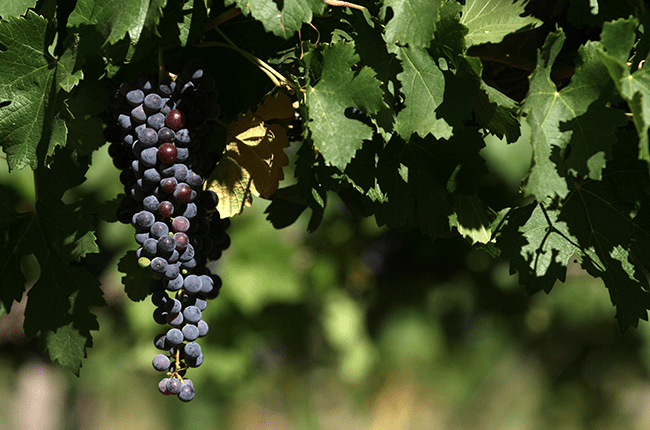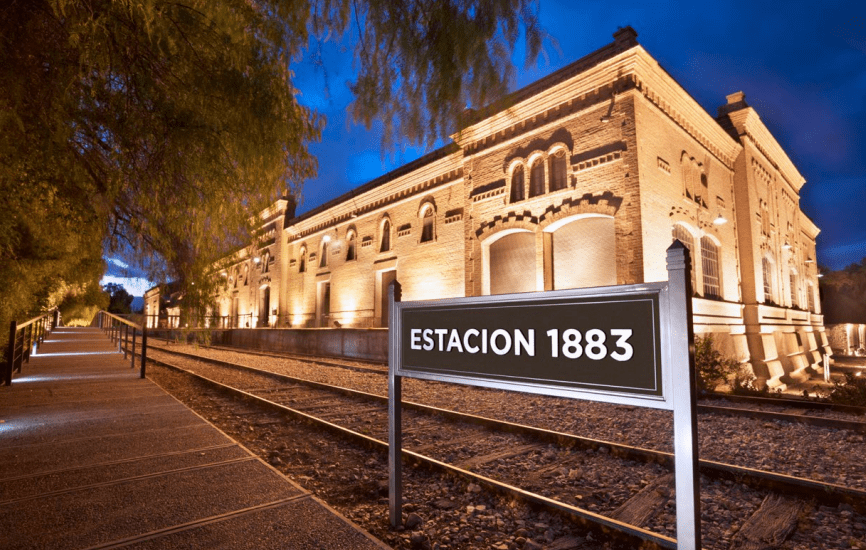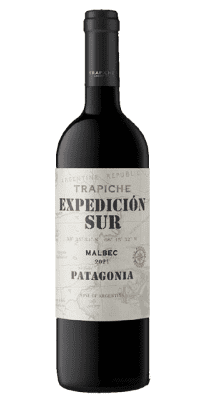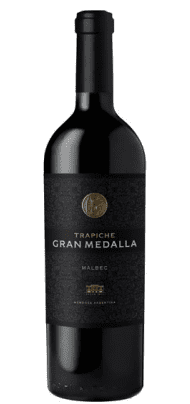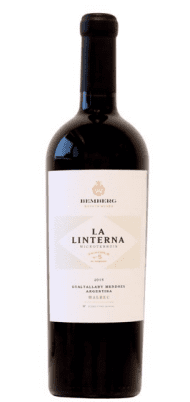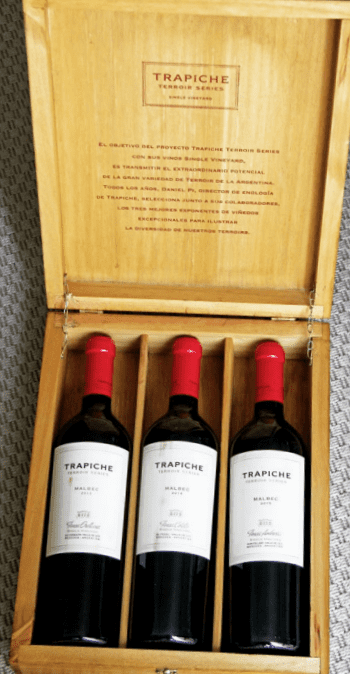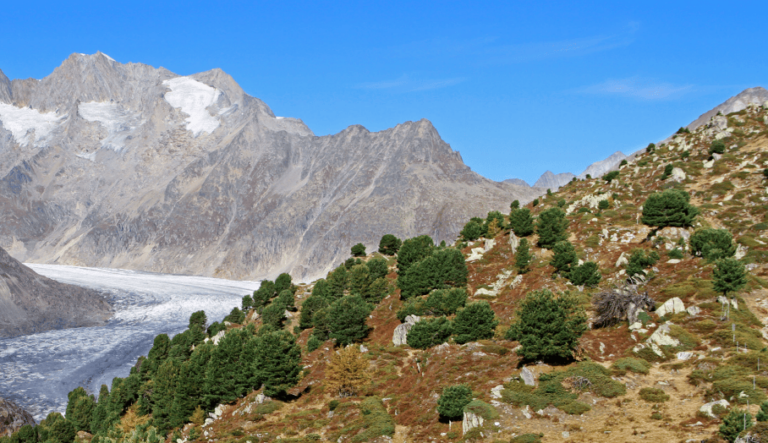While few of us need a reason to drink a glass of Argentine Malbec, World Malbec Day on April 17 gives us all permission to drink the ‘hero’ grape from South America’s largest wineproducing nation. It was on this date back in 1853 when provincial governor (and later president) Domingo Faustino Sarmiento of Argentina officially made it his mission to build and grow the country’s wine industry. The Malbec grape was historically a major planting in Bordeaux, providing colour and fruit to the blend. In fact, even before that, records suggest Malbec was France’s most widely planted grape. But in the 20th century, Malbec started to lose favour to Merlot and Cabernet Franc, partly because of its sensitivities to a number of vine ailments, one of which was frost. An especially severe 1956 frost wiped out a significant portion of Malbec vines in Bordeaux, allowing many growers a chance to start anew with different varieties.
One of Trapiche’s best-selling Malbecs is produced at a site dating back to 1883
While acreage began a steady decline in Bordeaux, in Argentina the grape began surging and has become a ‘national variety’ of a sort that is, in a way, now identified specifically with Argentine wine. The grape was first introduced to the country in the mid-19th century when Sarmiento instructed the French agronomist Miguel Pouget to bring a number of grapevine cuttings from France to Argentina. Some of the vines that Pouget brought were the very first Malbec vines to be planted in the country. During periods of economic difficulty during the 20th century, many Malbec vines were ripped out in favour of the cheaper, jug wine-producing varieties of Cereza and Criolla Grande.
But the Malbec variety was rediscovered in the late 20th century as the Argentine wine industry shifted its focus to a higherquality, more premium wine for export. As Argentine winemakers discovered the unique quality of wine that could be made from the grape, Malbec rose to greater prominence and is today the most widely planted red grape variety in the country. Following the variety’s resurgence, wine lovers around the world – particularly in the United States – discovered and praised Argentine Malbec.
Enjoying Argentinean wines
The grape clusters of Argentine Malbec are rather different from their French forebears, having smaller berries in tighter, smaller clusters. Argentine Malbec wine is characterized by its deep colour and intense fruity flavours, and while it doesn’t have the robust – and some would say harsh – tannic structure of a French Malbec, being rather more plush and velvety in texture, Argentine Malbecs have nevertheless shown aging potential similar to that of their French counterparts. The soft, rounded tannins of Argentine Mendoza make this an accessible and easy-to-enjoy red wine for novices and seasoned wine aficionados alike.
Requiring ample sun for maturation, Malbec’s most-praised wineries are in the high-altitude Mendoza region, which is also the leading producer of Malbec in Argentina. However, plantings are found elsewhere throughout the country, too, in places such as La Rioja, Salta, San Juan, Catamarca, and Buenos Aires.
In 2011, Wines of Argentina, the entity responsible for communicating the Argentine wine brand around the world, established April 17 as World Malbec Day. Lis Clément, their Head of Marketing and Communications at the time, founded this day because she was convinced this celebration would help further position Malbec as one of Argentina’s wine gems. And that has seemingly been the case: Boasting excellent quality, ever surprising and diverse, Argentina’s Malbec is expected to continue leading the way in positioning Argentina as one of the main oenological centres of the world.
So enjoy a bottle of Argentine Malbec this April 17 (it pairs exceptionally well with a nice steak), and celebrate World Malbec Day in appreciation of a truly remarkable story – a flagging wine varietal given a new lease on life by a country particularly well-suited to grow it, with the ongoing result a serendipitous one for both the Malbec varietal and the country whose wine industry it transformed.
Here are some great Malbecs we’ve enjoyed at various tastings in recent months.
Trapiche Expedición Sur Malbec Patagonia
TRAPICHE EXPEDICIÓN SUR PATAGONIA MALBEC
Trapiche has been producing wines in Argentina since 1881 and has attained recognition as one of its most significant estates. This wine is an expression of Malbec grown in Patagonia, in the southernmost region of Argentina. It exhibits an intense, purplish red colour so typical of Malbec and fragrant aromas of red fruit enlivened with a hint of spice. It has a full, round and long mouthfeel and is an excellent introduction to Malbec. This is an easy drinking style and is perfect to accompany a burger or to enjoy with barbecued spicy beef or lamb sausages.
Producer: Trapiche
Style: Expedición Sur
Region: Patagonia
Vintage: 2021
Alcohol Content: 14%
Closure: Cork
Price: RM115
Trapiche Gran Medalla Malbec
TRAPICHE GRAN MEDALLA MALBEC
This 100% single varietal red wine is aged in new French oak, and while it possesses a strong fruit profile, it is made in an Old World style (European) with elegance and sophistication. It shows a typical intense purple and violet hue and is brimming with concentrated aromas of red berries, plums, cherries, and raisins, highlighted by notes of toast, coconut, and vanilla from 18 months of ageing in oak. The wine is aged for another six months in the bottle before being released. While it’s ready to drink now, it will only get better with some bottle age. We suggest drinking this wine with any red meat and aged cheeses as well as duck, preferably smoked. The wine’s acidity provides a good balance to the fattiness of Wagyu beef, which is our ultimate pairing suggestion.
Producer: Trapiche
Style: Gran Medalla
Region: Uco Valley
Vintage: 2019
Alcohol Content: 14.5%
Closure: Cork
Price: RM173
Bemberg Estate La Linterna Malbec
BEMBERG LA LINTERNA ‘FINCA EL
TOMILLO’ MALBEC
We have been savouring the wines of Bemberg for several years and consider the estate one of the leading wineries in Argentina. It has family winemaking traditions that Otto Bemberg brought with him when he migrated from Germany to Argentina in 1850. While he began brewing beer in his new homeland, his descendants set about acquiring leading wine estates throughout the land in 2010. The La Linterna selection features four grape varieties (Cabernet Sauvignon, Malbec, Chardonnay, and Pinot Noir) produced from microsites where the variety grows best.
This Malbec from Finca El Tomillo is grown in Qualtallary on Plot No. 5, where the rich sandy soils at 1,210 m above sea level are ideal for Malbec. The winemaking direction with ‘La Linterna’ is to produce micro-vinifications of specific parcels of grapes, selected for their soil qualities. The wine spends 18 months in new oak and then at least six months of bottle aging, although it has an ageing potential of some 15 years. Its black fruit and spices combine to make this wine complex and with great depth in its flavour profile. This bold, unfiltered wine produced from one carefully selected montane site combines layers of liquorice, pepper and clove flavours. It is an elegant wine that is highly regarded for its dry, savoury style rather than its power. In recognition of its reputation, bottles are individually numbered. Save this wine for your favourite cut of grassfed beef – from Argentina, naturally.
Producer: Bemberg Estate Wines
Style: La Linterna
Region: Qualtallary, Mendoza
Vintage: 2015
Alcohol Content: 15%
Closure: Cork
Price: RM425
Single Site Trapiche Malbecs
TRAPICHE TERROIR SERIES
This three-bottle set, handsomely packaged in a wooden presentation box, is one for serious Malbec aficionados, as it offers a keen insight to those seeking variation in three different vineyards in the Mendoza region. These three wines are part of a Terroir Series that showcases some of the unique environments in Mendoza in which Trapiche grows its iconic Malbec grape. Just to prove what a tough job winemaking is, the winemakers at Trapiche sample Malbecs grown on 200 specific vineyard sites to select just three that make the cut as the best of the best.
Finca Orellana (finca means estate in Spanish) at 990 m above sea level is consistently one of the finest expressions of Malbec in the Uco Valley. The 2013 vintage is garnet red in colour, a nose that combines cherries and balsamic, and has a long, elegant finish of concentrated fruit and soft tannins. Finca Coletto (2014) was established some 65 years ago at El Peral, Tupungato in the Uco Valley, at 1,127 m above sea level. The wine’s perfumed notes of blueberry and blackberry follow with sweet, juicy and generous tannins and an elegant finish. Located at an altitude of 1,300 m, Finca Ambrosia (2015) is another consistent and exceptional winery in the Gualtallary, Tupungato in the Uco Valley.
Producer: Trapiche
Style: Single Site Set
Region: Mendoza
Vintage: 2013, 2014, and 2015
Alcohol Content: 14.5%
Closure: Cork
Price: RM825/3 bottles

